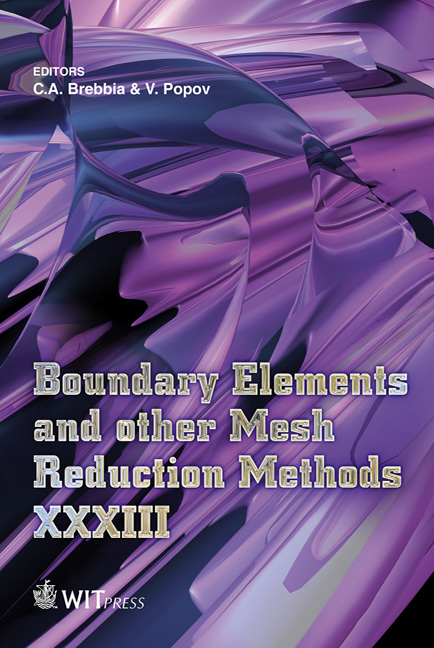BEM Simulation Of Transient Fluid Flow Phenomena
Price
Free (open access)
Transaction
Volume
52
Pages
12
Page Range
49 - 60
Published
2011
Size
1,673 kb
Paper DOI
10.2495/BE110051
Copyright
WIT Press
Author(s)
J. Ravnik & L. ˇ Skerget
Abstract
In this paper a Boundary Element Method based numerical algorithm is presented for the simulation of three-dimensional unsteady fluid flow and heat transfer. Four different time discretization techniques are considered and compared on a model unsteady heat diffusion problem. Analytical solution of the problem is used to designate the three point second-order finite different approximation of the accumulation term of the transport equations as the most accurate. This choice is incorporated into the flow solver and the developed algorithm is used to simulate Rayleigh–B´enard convection. Oscillatory and chaotic behaviour of the flow field and heat transfer are observed. Temperature slices and velocity vectors are presented. Heat flux is presented in terms of the Nusselt number. Keywords: Boundary Element Method, Rayleigh–B´enard convection, velocityvorticity formulation, time discretization. 1 Introduction The Boundary Element Method (BEM) is a numerical technique that has been successfully applied for the solution of a wide variety of engineering problems and natural phenomena. In this paper we are focused on unsteady natural convection phenomena. A transient simulation is required, which must be able to capture the oscillatory and chaotic nature of the flow problem. The paper presents a BEM based laminar viscous flow solver and focuses on the time discretization. Three implicit finite difference approximations and an explicit approximation of the accumulation term of the transport equations are compared against an analytical solution of a model problem. The three point second order finite difference approximation is then incorporated into the flow solver and used to obtain an unsteady solution of the Rayleigh–B´enard convection problem.
Keywords
Boundary Element Method, Rayleigh–Bénard, convection, velocityvorticity formulation, time discretization





